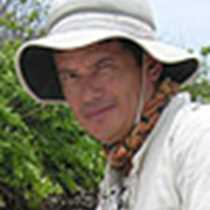Isabela Island
The largest island of Galápagos, Isabela, is well known for its active volcanoes and its curious sea-horse shape. Continuing our sailing through its western face, early in the morning we dropped anchor off the shore of Urbina bay; behind, Alcedo volcano looked imposing with its unmistakable appearance in which caldera shelters one the largest population of giant tortoises of the archipelago.
After breakfast we landed on the black beach to explore the coastline and look for evidence of the uplifting that occurred there in 1954. Due to a shifting of magma and afterwards an eruption of Alcedo volcano, more than one square mile of seafloor was uplifted as much as 12 feet. This event was so fast that many marine species such as lobsters, marine turtles and many more died stranded without any chance to escape. Certainly our guests observed carefully the fossilized rests of sea worms, barnacles and other sessile species on the rocks along the shore. The landscape was gorgeous, accompanied with many other attractions such as Sally Lightfoot crabs, Galápagos penguins and flightless cormorants. The most incredible sighting was probably being able to see large white coral heads inland. They lay on an area which will one day most likely become a beautiful white beach due to the erosion. Moving inland, the grown vegetation made it impossible to appreciate the “submarine landscape”. Instead, a group of Galápagos land iguanas resting along the path reminded us we were moving away from the ocean. Sounds weird dear reader, but after an hour and a half walking along the old seafloor, we finally arrived at the area where the original beach once was. A short distance from there, we observed two juvenile giant tortoises under the trees, evading the severe midday sun.
In the afternoon, our activities began by visiting black lava fields in Punta Moreno. If anyone wants to imagine how Galápagos once was, Punta Moreno is the place to explore. At first sight the area looks barren. However, there are many oases of brackish water sheltering many different species of waders. Our guests had the opportunity to observe flamingoes, pintail ducks and moorhens with exuberant vegetation, making a beautiful contrast with the black lava. After walking, our “lava hikers” enjoyed a Zodiac ride along the coastline of Isabela, observing Flightless cormorants, huge marine iguanas, shearwaters, sea turtles and huge sting rays, some were more than four feet in diameter.
Everybody finished the day tired, but very happy and satisfied, for it was a great one!
- Daily Expedition Reports
- 01 Jul 2010
From the National Geographic Islander in Galápagos, 7/1/2010, National Geographic Islander
- Aboard the National Geographic Islander
- Galápagos




